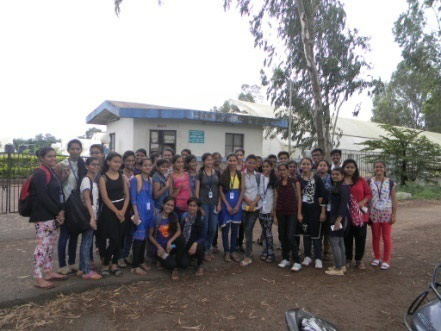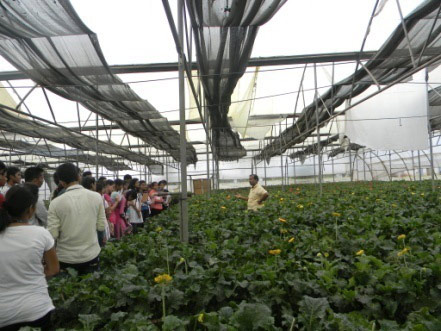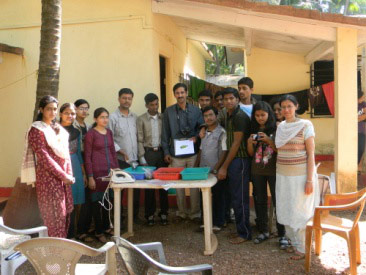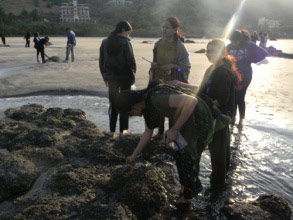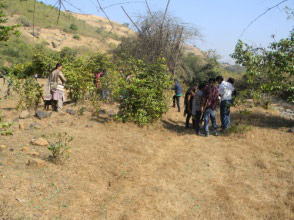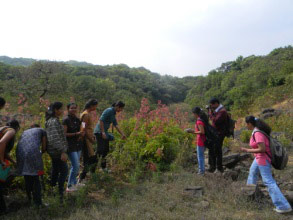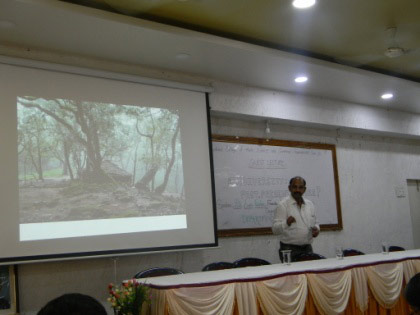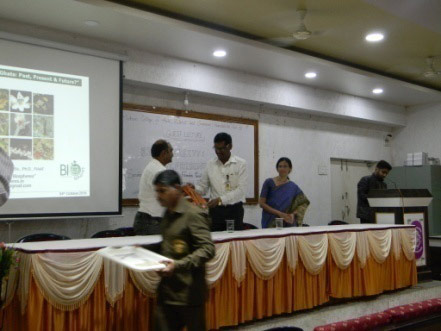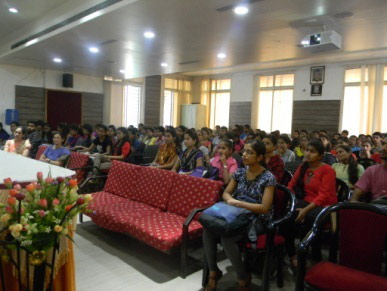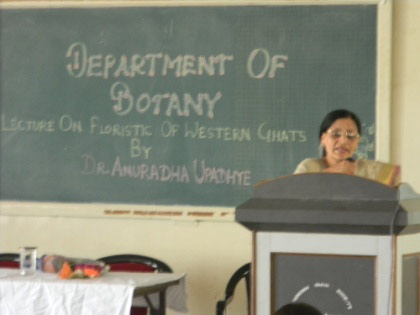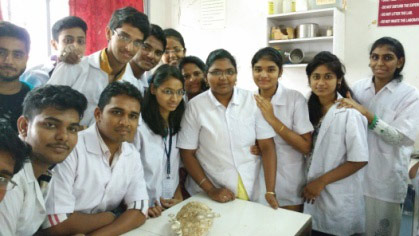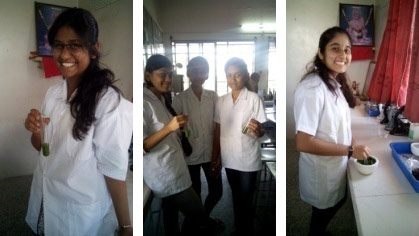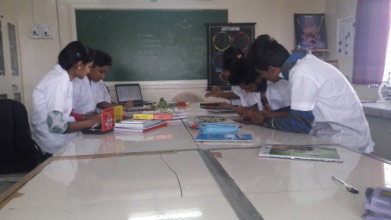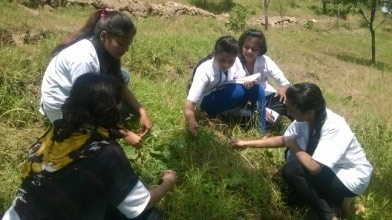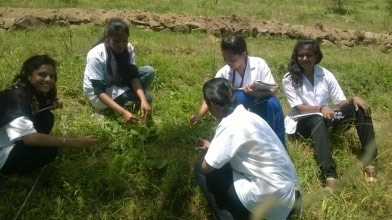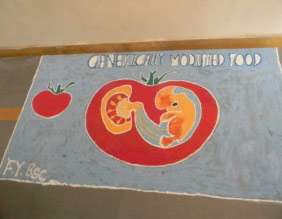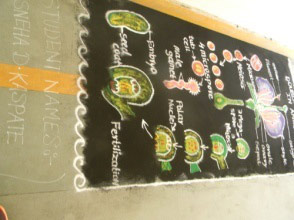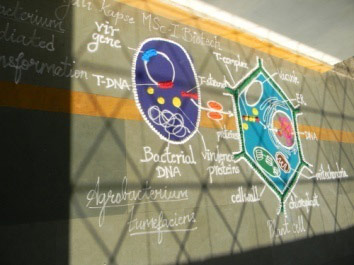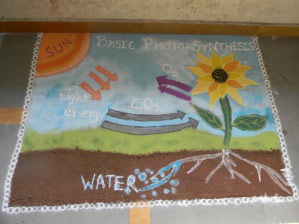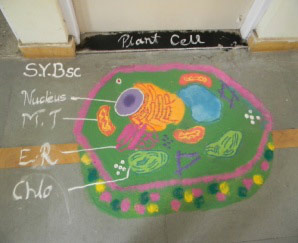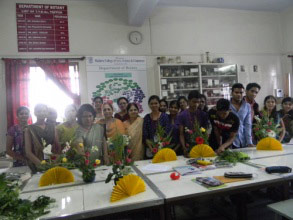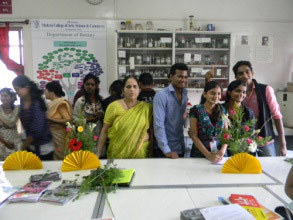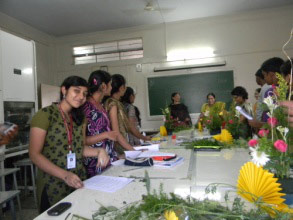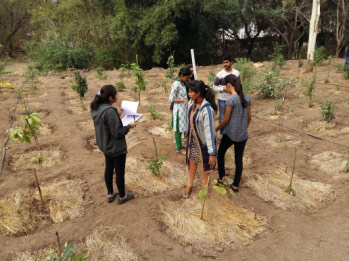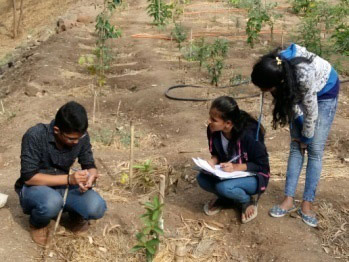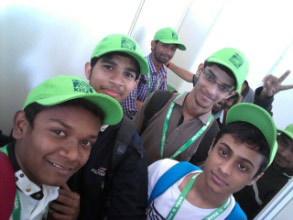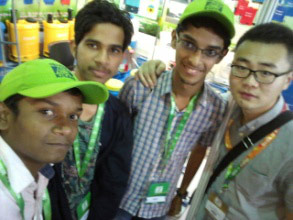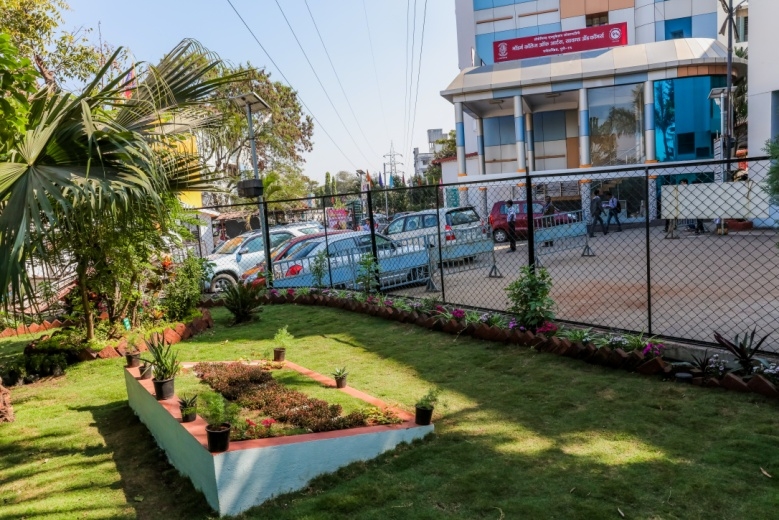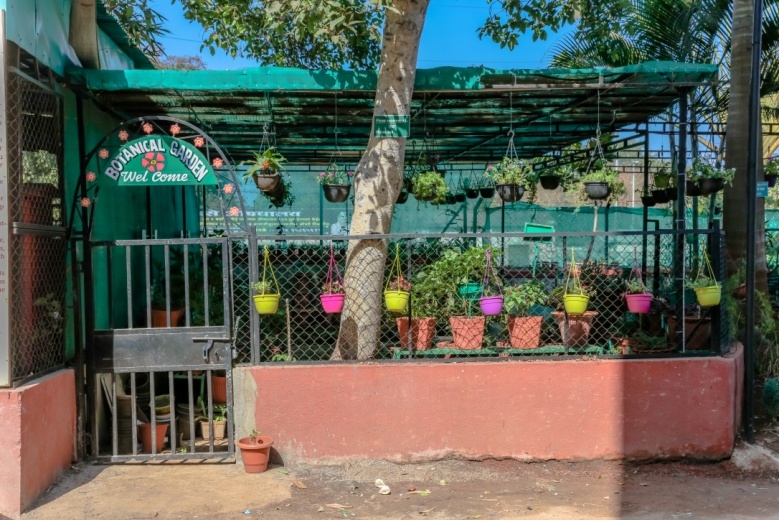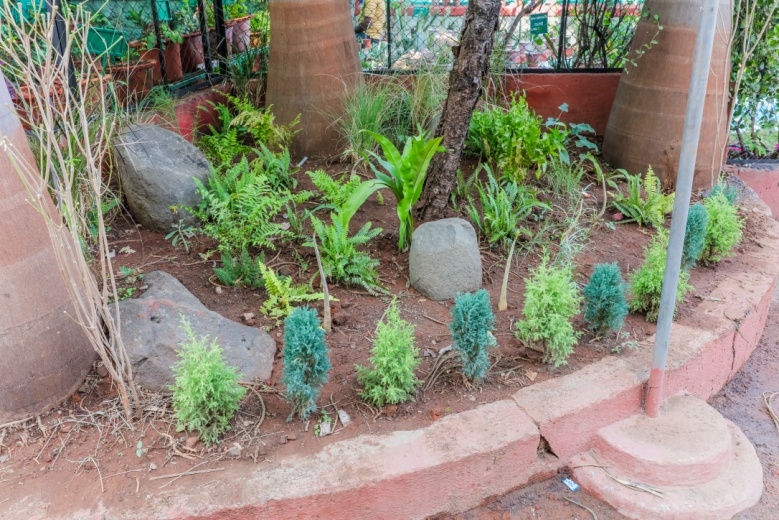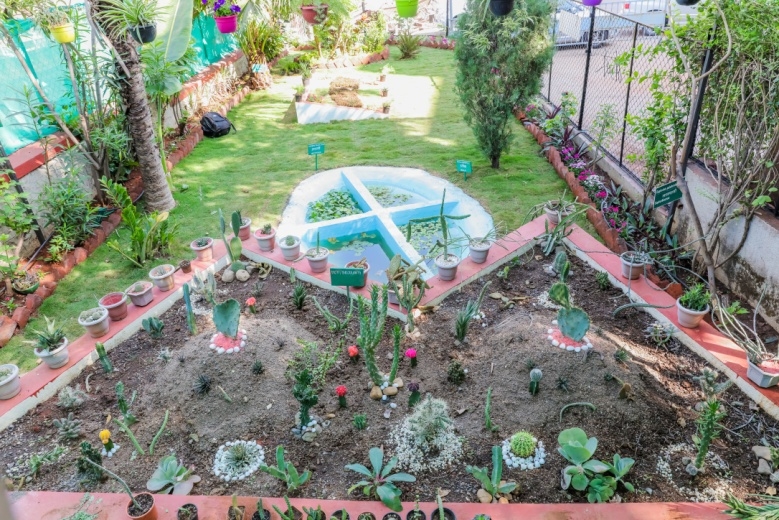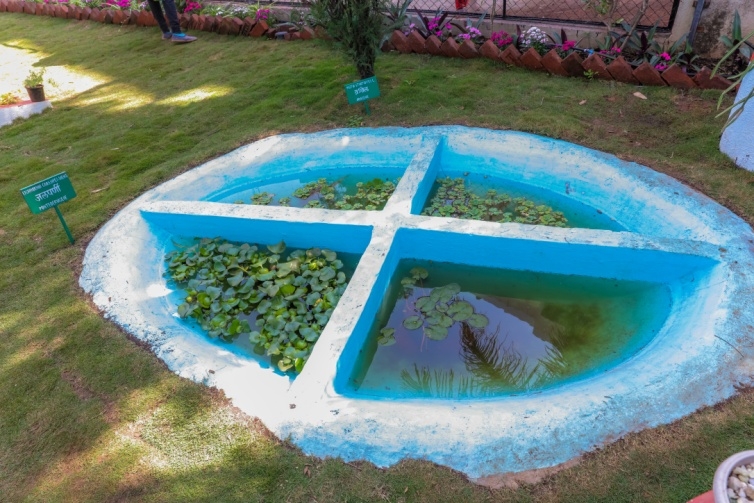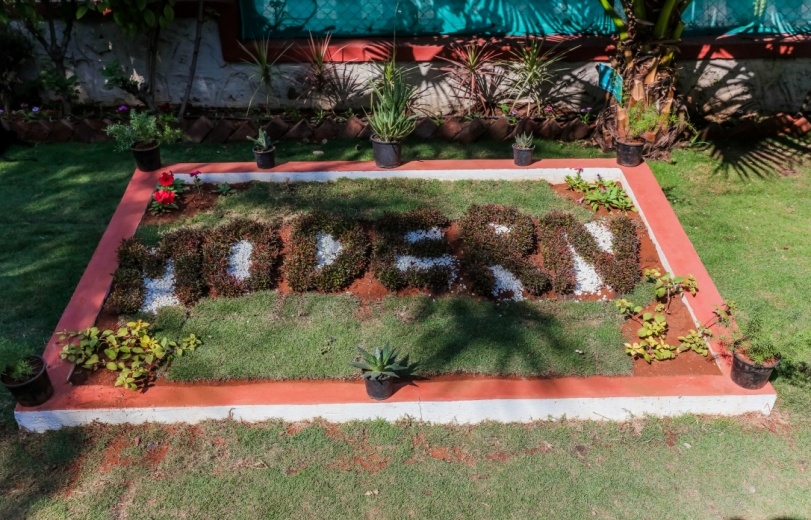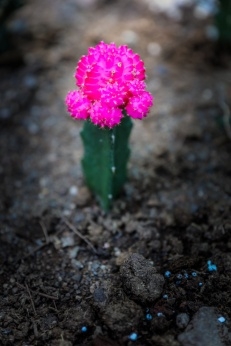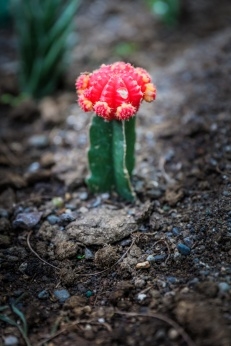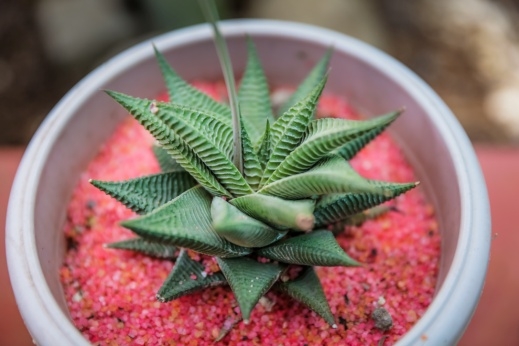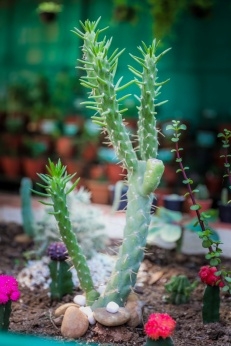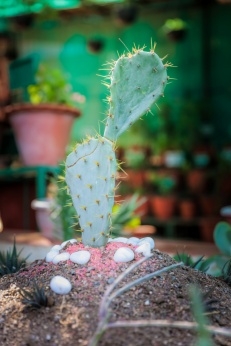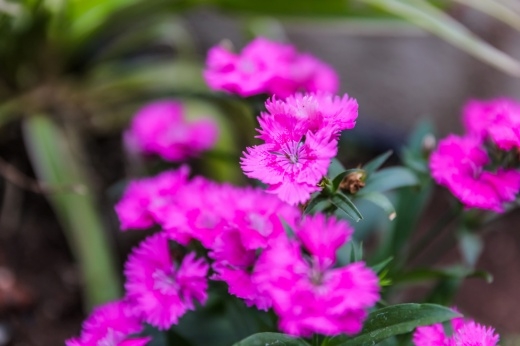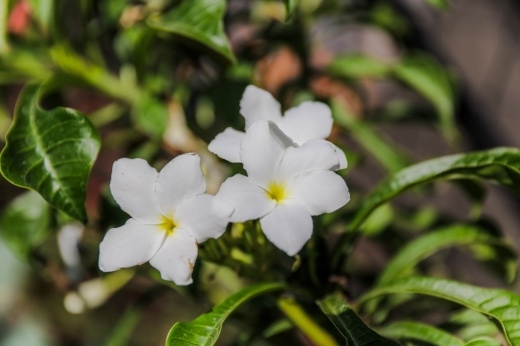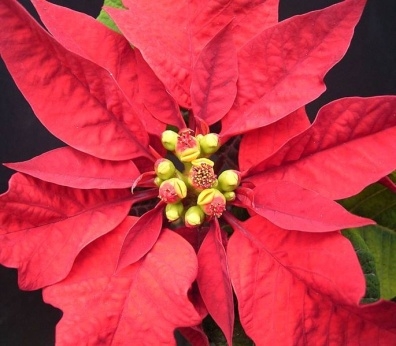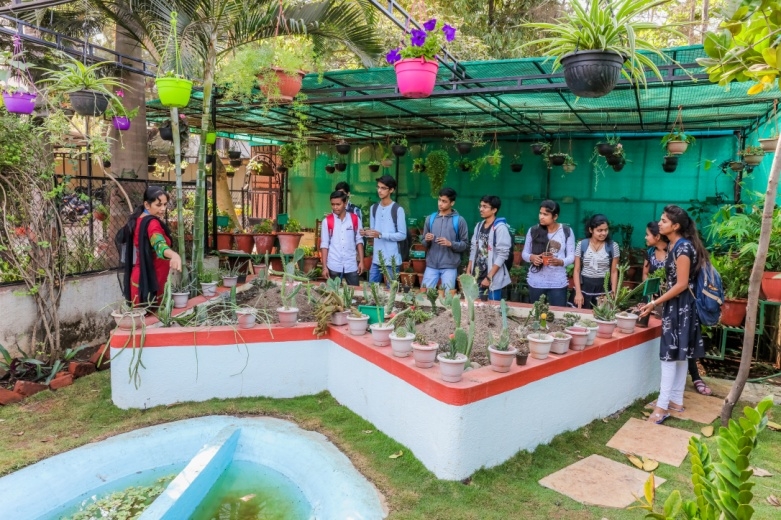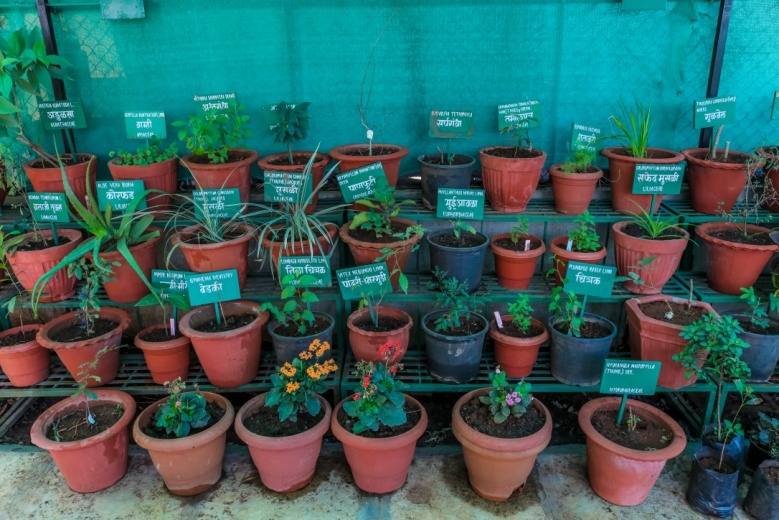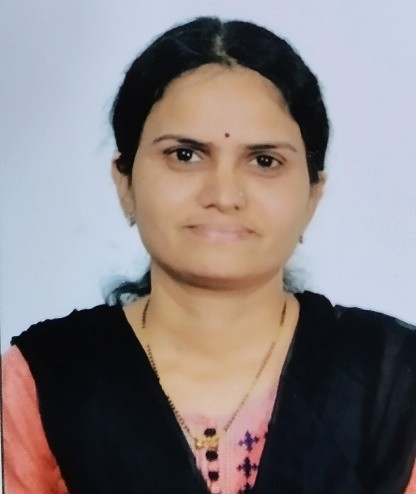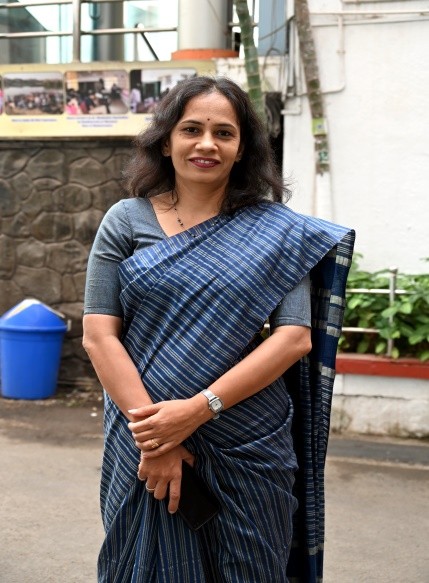Best Innovative College Award (2019-20) from CEDA
'STAR STATUS' received from the Department of Biotechnology (DBT), Ministry of Science and Technology, Government of India
'STAR STATUS' received from the Department of Biotechnology (DBT), Ministry of Science and Technology, Government of India
 NOTICE BOARD
NOTICE BOARD
- F.Y.B.Com (Accounting and Finance) (BAF) NEP Version II Under Graduate (UG) End Semester Examination (ESE) Oct.-Nov. 2025 Time Table
- All NEP Version II Under Graduate (UG) End Semester Examination (ESE) Oct.-Nov. 2025 Time Table
- All Autonomous Under Graduate (UG) & Post Graduate (PG) End Semester Examination (ESE) Oct.-Nov. 2025 Time Table
- SYBSC Data Science Practical Time Table NEP2
- Academic Year 2025-26 Examination Form for All B.Voc Regular and Backlog Students (NEP II) (October - November 2025)
- All NEP Version I Under Graduate (UG) & Post Graduate (PG) End Semester Examination (ESE) Oct.-Nov. 2025 Time Table
- S.Y. B.Sc. (computer Science) Practical Time Table Regular 2025-26
- Examination Form for Third Year (Regular) and First Year and Second Year Backlog Student (NEP I) October-November 2025)
- SY & TY B.Com, B.Sc. comp. Sci., Biotech, B.Sc.(Regular) (University Backlogs) Exam Form
- All NEP Version II Under Graduate (UG) End Semester Examination (ESE) Oct.-Nov. 2025 Time Table
- S.Y. Backlog_UG-PG & T.Y. Backlog UG (Autonomous) Exam Form
- NEP-II UG F.Y.-S.Y & PG All Exam Form Date Extended
- First Year UG & PG ( Sem-I & II ) Backlog Student of Autonomous Course, Examination Form (OCT/NOV-2025).
- T.Y.B.Com. Autonomous Semester -V Internal Examination (Autonomous) September 2025 Timetable
- T.Y.B.Com. (NEP Version l) Semester -V Special Internal Examination September 2025 Timetable
- T.Y.B.COM. (NEP Version 1) Semester -V Regular Internal Examination September 2025 Timetable
- S.Y.B.Com. (NEP Version 2) Semester —Ill Special Internal Examination September 2025 Timetable
- S.Y.B.COM. (NEP Version 2) Semester -Ill Regular Internal Examination September 2025 Timetable
- F.Y.B.Com. (NEP Version 2) Semester -l Regular Internal Examination September 2025 Timetable
- F.Y.B.Com. (Accounting and Finance) (BAF) Semester -l Regular Internal Examination September 2025 Timetable
- TYBBACA NEP -I Internal Exam Timetable
- TYBBACA Autonomous internal Exam Timetable
- SYBBACA AICTE NEP-II internal exam Timetable
- Academic Year 2025-26 Examination Form for First Year and Second Year (NEP II)
- Academic Year 2025-26 Examination Form for Post Graduate (NEP I) (October - November 2025)
- Original Marksheet Collection - Post Graduate Courses (NEP I)
- Notice For Circular No. 209-2025 _ Temporary admission as a Special opportunity for the year 2025-26
- Academic Year 2025–26 – Govt. Hostel, Aadhaar, SWAYAM
- Students Notice FY,SY,TYBA Internal Exam Sept. 2025
- Time Table FY,SY,TYBA Internal Exam, Sept.2025
- Certificate Course in Spoken English
- Special Exam MarchApril 2025 Time Table
- Notice for college start for academic year 2025-26.
- Notice for the start of the Under Graduate Science Faculty Lecture.
- Noticce for Photocopy Form (NEP V-I) End Semester Examination_April_May-2025
- Notice fo S.Y. Under Graduation April-May-2025 (NEP Version - I) Result
- Notice for F.Y.S.Y. BacklogT.Y Regular Under Graduation B.A AprilMay- 2025 (Autonomous) Result
- Notice for F.Y. All Under Graduation AprilMay-2025 (NEP Version - II) Result
- Notice For Photocopy Form Under Graduation (Autonomous-NEP) End Semester Examination April-May 2025
- Under Graduation Result April-May 2025 Autonomous
- Updated F.Y.B.B.A(C.A) & BCA (Science) ESE Under AICTE (NEP-2020) March-April 2025 Time Table
- Notice For Exam Form First Year BBA (CA) & BCA Science NEP Version II (AICTE) April-May 2025
- Notice For Photocopy Form (Autonomous-NEP) End Semester Examination April-May 2025
- Notice for Post Graduation Result AprilMay-2025 (Autonomous)
- Practical/Project Examination IV Semester M.Sc CS & M.Sc CA Apr/May 2025
- FYBBA(CA) AICTE sem II internal exam timetable
- F.Y. Animation Exam Notice April-May 2025
- SPPU 2019 Pattern Apr 2025 Backlog Exam Time Tables
- Savitribai Phule Pune University Physical Education Backlog Examination - March 2025 (2019 Credit Pattern)
- Special Exam for Backlog 3rd semester and SYBA and SY.BCOM Regular Students Mar-Apr 2024-25
- Revised F.Y.B.Sc. Blended NEP Version 2 End Semester Examination April-May 2025 Time Table
- Second Year Regular Physical Education(Yoga)Exam Sem IV Schedule 2024-25
- First Year Regular Physical Education(Yoga)Exam Sem II Schedule 2024-25
- First and Second Year Backlog Physical Education(Yoga)Exam Schedule 2024-25
- M.Com II Semester IV Project Viva April 2025
- Notice for Examination form Pune University April 2025
- Notice for SY Animation Examination NEP I April 2025
- Practical Viva Backlog Examination March April 2024-2025 (SPPU 2019 Pattern)
- F.Y & S.Y. Physical Education Yoga Examination April 2025
- CC Varticals Examination Mar- Apr 202S Academic Year 2024- 202S Semester II
- SYBSc(Comp. Sci.)NEP I REGULAR PRACTICAL Time Table (MAR 25)
- SYBSc(Comp. Sci.)NEP I BACKLOG PRACTICAL Time Table (MAR 25)
- SYBSc(Comp. Sci.) AUTONOMOUS BACKLOG PRACTICAL Time Table (MAR 25)
- FYBSc(Comp. Sci.)NEP II REGULAR PRACTICAL Time Table (MAR 25)
- FYBSc(Comp. Sci.)NEP II BACKLOG PRACTICAL Time Table (MAR 25)
- FYBSc(Comp. Sci.)NEP I BACKLOG PRACTICAL Time Table (MAR 25)
- SYBSc Gen End Sem Practical Examination Timetable & Batch Details Mar 2025
- FYBSc Gen End Semester Examination Timetable & Batch Details Mar 2025
- T.Y.B.B.A(CA) Autonomous Project Examination March 2025
- B.B.A(CA) Autonomous Practical Examination March 2025 Time Table
- B.B.A(CA) NEP Practical Examination March 2025 Time Table
- UG Science Faculty NEP Version -2 End Semester Examination April-May 2025 Time Table
- UG Commerce Faculty NEP Version -2 End Semester Examination April-May 2025 Time Table
- UG Arts Faculty NEP Version-2 End Semester Examination April-May 2025 Time Table
- Science UG Faculty NEP Version-1 End Semester Examination April-May 2025 Time Table
- Science PG Faculty NEP Version-1 End Semester Examination April-May 2025 Time Table
- Commerce UG Faculty NEP Version-1 End Semester Examination April-May 2025 Time Table
- Commerce PG Faculty NEP Version-1 End Semester Examination April-May 2025 Time Table
- Arts UG Faculty NEP Version-1 End Semester Examination April-May 2025 Time Table
- Arts PG Faculty NEP Version-1 End Semester Examination April-May 2025 Time Table
- All UG Faculty OE NEP Version-1 End Semester Examination April-May 2025 Time Table
- F.Y. Under Graduation (AICTE Courses) Result Examination Held in Feb, 2025 (NEP 2020) Sem - I
- All PG Faculty Autonomous End Semester Examination April-May 2025 Time Table
- Science Faculty Autonomous End Semester Examination April-May 2025 Time Table
- Arts Faculty Autonomous End Semester Examination April-May 2025 Time Table
- Commerce Faculty Autonomous End Semester Examination April-May 2025 Time Table
- FYBCOM Practical Viva Backlog Examination-March-April2025 SEM I & SEM II (NEP Version-I)
- SYBCOM Practical Viva Backlog & Regular Examination SEM III & SEM IV March- April-2025 (NEP Version-I)
- TYBSc Mathematics practical Examination March/April 2025 timetable
- TYBCOM Practical Viva Regular and Backlog Examination Mar April 2025
- FY&SY BCOM Practical Viva Backlog Examination Mar April 2025
- AUTONOMOUS COURSES BACKLOG STUDENTS FY(Sem and II) Examination Form
- Notice For Exam Form NEP April-May 2025
- Notice For Exam Form Autonomous April-May 2025
- March/April 2025 Practical Examination
- Copy Case Meeting Oct.-Nov. 2024
- Notice for Revaluation Result of Oct.Nov. 2024 Examination
- Updated Internal Exam Time Tables - Science Faculty Feb 2025 Final
- Internal Exam (Science and Technology) A.Y. 2024.2025
- Notice for Photocopy Oct.-Nov. 2024
- Department of BBA(CA) Academic Year 2024-2025 End Semester Exam(ESE) FYBBACA(NEP2020) Under AICTE Timetable Semester-I
- Tentative CIE, ESE & Practical Examination Schedule - April 2025
- Notice for Exam Form of First Year BBA (CA) & BCA Science NEP Version II (AICTE) of A.Y. 2024-25 Sem - I
- Internal Exam of F.Y. BCA Timetable (NEP2020)
- End Semester Exam(ESE) Timetable of FY BCA (NEP2020) Under AICTE Sem I
- Practical Exam Timetable of FY BCA (NEP2020) Under AICTE Sem I
- F.Y.S.Y. Under Graduation Result OctNov-2024 (NEP 2020)
- Notice for F.Y.S.Y. Post Graduation Result OctNov-2024 (NEP 2020)
- Photocopy and Revaluation Form (Autonomous) End Semester Examination-OctNov-2024
- F.Y.S.Y. Backlog, T.Y Regular Under Graduation and F.Y.S.Y. Backlog Post Graduation Result OctNov-2024 (Autonomous)
See More
 Download PDF
Download PDF
- Admission Cancellation Policy
- Caution Money Form(Refund/Deposit Form)
- HallTicket For_B.Sc. (Biotech) 2019 Credit Pattern_Exam
- HallTicket For_B.Sc. (Computer Science) 2019 Credit Pattern_Exam
- HallTicket For_B.Sc. Computer Science(Rev.2013)_Exam
- HallTicket For_BCA (Science) 2019 Credit Pattern_Exam
- HallTicket For_M.A._M.Sc. STATISTICS 2019 Credit Pattern_Exam
- HallTicket For_M.Sc. ORGANIC CHEMISTRY Credit Pattern 2019_Exam
- HallTicket For_M.Sc.(Computer Applications)2020_Exam
- Skill Development Courses Brochure
- Soft Skill Development Programme Application Form
- Star College Scheme of Department of Biotechnology
- Granthavedh Vol VIII
- UGC MRP Summary Report
- Library Brochure
- Library E-Newsletter
 PROGRAMMES TAUGHT
PROGRAMMES TAUGHT
- B.A.
- B.A.(Economics)
- B.A.(English)
- B.A.(Geography)
- B.A.(History)
- B.A.(Psychology)
- B.A.(Sociology)
- B.Com.
- B.B.A.(C.A.)
- B.Sc.
- B.Sc. (Chemistry)
- B.Sc. (Maths)
- B.Sc. (Microbiology)
- B.Sc. (Physics)
- B.Sc. (Statistics)
- B.Sc. (Zoology)
- B.Sc. (Biotechnology)
- B.Sc. (Computer Science)
- B.C.A. (Science)
- B.Sc. Blended in Chemistry [University of Melbourne , Australia] (International Collaboration Course)
- B.Voc.(Food Processing Technology)
- M.A. (Economics)
- M.A. (History)
- M.A. (Psychology)
- M.A. (Sociology)
- M.Com.
- M.Sc. (Biotechnology)
- M.Sc. (Organic Chemistry)
- M.Sc. (Computer Science)
- M.Sc. (Computer Applications)
- M.Sc. (Maths)
- M.Sc. (Microbiology)
- M.Sc. (Statistics)
- M.Sc. (Zoology)
- M. Phil. Zoology
- Ph. D. Zoology
- M. Phil. Chemistry
- M. Phil. Biotechnology
- Ph. D. Biotechnology
- U.G. Programmes:
- P.G. Programmes:
- Research Programmes:
Programmes NOT-Taught/Closed
- M. Phil. Microbiology
- Ph. D. Microbiology
- B. Sc. (Animation)
- B.Voc. (Green House Technology)
- M. A. (Geography)
Self declaration for affiliation status
University Affiliation Letter
 Examination section
Examination section
- F.Y.B.Com (Accounting and Finance) (BAF) NEP Version II Under Graduate (UG) End Semester Examination (ESE) Oct.-Nov. 2025 Time Table
- All NEP Version II Under Graduate (UG) End Semester Examination (ESE) Oct.-Nov. 2025 Time Table
- All Autonomous Under Graduate (UG) & Post Graduate (PG) End Semester Examination (ESE) Oct.-Nov. 2025 Time Table
- SYBSC Data Science Practical Time Table NEP2
- Academic Year 2025-26 Examination Form for All B.Voc Regular and Backlog Students (NEP II) (October - November 2025)
- All NEP Version I Under Graduate (UG) & Post Graduate (PG) End Semester Examination (ESE) Oct.-Nov. 2025 Time Table
- S.Y. B.Sc. (computer Science) Practical Time Table Regular 2025-26
- Examination Form for Third Year (Regular) and First Year and Second Year Backlog Student (NEP I) October-November 2025)
- SY & TY B.Com, B.Sc. comp. Sci., Biotech, B.Sc.(Regular) (University Backlogs) Exam Form
- All NEP Version II Under Graduate (UG) End Semester Examination (ESE) Oct.-Nov. 2025 Time Table
- S.Y. Backlog_UG-PG & T.Y. Backlog UG (Autonomous) Exam Form
- NEP-II UG F.Y.-S.Y & PG All Exam Form Date Extended
- First Year UG & PG ( Sem-I & II ) Backlog Student of Autonomous Course, Examination Form (OCT/NOV-2025).
- T.Y.B.Com. Autonomous Semester -V Internal Examination (Autonomous) September 2025 Timetable
- T.Y.B.Com. (NEP Version l) Semester -V Special Internal Examination September 2025 Timetable
- T.Y.B.COM. (NEP Version 1) Semester -V Regular Internal Examination September 2025 Timetable
- S.Y.B.Com. (NEP Version 2) Semester —Ill Special Internal Examination September 2025 Timetable
- S.Y.B.COM. (NEP Version 2) Semester -Ill Regular Internal Examination September 2025 Timetable
- F.Y.B.Com. (NEP Version 2) Semester -l Regular Internal Examination September 2025 Timetable
- F.Y.B.Com. (Accounting and Finance) (BAF) Semester -l Regular Internal Examination September 2025 Timetable
- TYBBACA NEP -I Internal Exam Timetable
- TYBBACA Autonomous internal Exam Timetable
- SYBBACA AICTE NEP-II internal exam Timetable
- Academic Year 2025-26 Examination Form for First Year and Second Year (NEP II)
- Academic Year 2025-26 Examination Form for Post Graduate (NEP I) (October - November 2025)
- Original Marksheet Collection - Post Graduate Courses (NEP I)
- Notice For Circular No. 209-2025 _ Temporary admission as a Special opportunity for the year 2025-26
- Students Notice FY,SY,TYBA Internal Exam Sept. 2025
- Time Table FY,SY,TYBA Internal Exam, Sept.2025
- Special Exam MarchApril 2025 Time Table
- Noticce for Photocopy Form (NEP V-I) End Semester Examination_April_May-2025
- Notice fo S.Y. Under Graduation April-May-2025 (NEP Version - I) Result
- Notice for F.Y.S.Y. BacklogT.Y Regular Under Graduation B.A AprilMay- 2025 (Autonomous) Result
- Notice for F.Y. All Under Graduation AprilMay-2025 (NEP Version - II) Result
- Notice For Photocopy Form Under Graduation (Autonomous-NEP) End Semester Examination April-May 2025
- Under Graduation Result April-May 2025 Autonomous
- B.B.A(CA) AICTE NEP II Practical Examination June 2025 time table
- Updated F.Y.B.B.A(C.A) & BCA (Science) ESE Under AICTE (NEP-2020) March-April 2025 Time Table
- Notice For Exam Form First Year BBA (CA) & BCA Science NEP Version II (AICTE) April-May 2025
- Notice For Photocopy Form (Autonomous-NEP) End Semester Examination April-May 2025
- Notice for Post Graduation Result AprilMay-2025 (Autonomous)
- Practical/Project Examination IV Semester M.Sc CS & M.Sc CA Apr/May 2025
- FYBBA(CA) AICTE sem II internal exam timetable
- F.Y. Animation Exam Notice April-May 2025
- SPPU 2019 Pattern Apr 2025 Backlog Exam Time Tables
- Savitribai Phule Pune University Physical Education Backlog Examination - March 2025 (2019 Credit Pattern)
- Special Exam for Backlog 3rd semester and SYBA and SY.BCOM Regular Students Mar-Apr 2024-25
- Revised F.Y.B.Sc. Blended NEP Version 2 End Semester Examination April-May 2025 Time Table
- Second Year Regular Physical Education(Yoga)Exam Sem IV Schedule 2024-25
- First Year Regular Physical Education(Yoga)Exam Sem II Schedule 2024-25
- First and Second Year Backlog Physical Education(Yoga)Exam Schedule 2024-25
- M.Com II Semester IV Project Viva April 2025
- Notice for Examination form Pune University April 2025
- Notice for SY Animation Examination NEP I April 2025
- Practical Viva Backlog Examination March April 2024-2025 (SPPU 2019 Pattern)
- F.Y & S.Y. Physical Education Yoga Examination April 2025
- CC Varticals Examination Mar- Apr 202S Academic Year 2024- 202S Semester II
- SYBSc(Comp. Sci.)NEP I REGULAR PRACTICAL Time Table (MAR 25)
- SYBSc(Comp. Sci.)NEP I BACKLOG PRACTICAL Time Table (MAR 25)
- SYBSc(Comp. Sci.) AUTONOMOUS BACKLOG PRACTICAL Time Table (MAR 25)
- FYBSc(Comp. Sci.)NEP II REGULAR PRACTICAL Time Table (MAR 25)
- FYBSc(Comp. Sci.)NEP II BACKLOG PRACTICAL Time Table (MAR 25)
- FYBSc(Comp. Sci.)NEP I BACKLOG PRACTICAL Time Table (MAR 25)
- SYBSc Gen End Sem Practical Examination Timetable & Batch Details Mar 2025
- FYBSc Gen End Semester Examination Timetable & Batch Details Mar 2025
- T.Y.B.B.A(CA) Autonomous Project Examination March 2025
- B.B.A(CA) Autonomous Practical Examination March 2025 Time Table
- B.B.A(CA) NEP Practical Examination March 2025 Time Table
- UG Science Faculty NEP Version -2 End Semester Examination April-May 2025 Time Table
- UG Commerce Faculty NEP Version -2 End Semester Examination April-May 2025 Time Table
- UG Arts Faculty NEP Version-2 End Semester Examination April-May 2025 Time Table
- Science UG Faculty NEP Version-1 End Semester Examination April-May 2025 Time Table
- Science PG Faculty NEP Version-1 End Semester Examination April-May 2025 Time Table
- Commerce UG Faculty NEP Version-1 End Semester Examination April-May 2025 Time Table
- Commerce PG Faculty NEP Version-1 End Semester Examination April-May 2025 Time Table
- Arts UG Faculty NEP Version-1 End Semester Examination April-May 2025 Time Table
- Arts PG Faculty NEP Version-1 End Semester Examination April-May 2025 Time Table
- All UG Faculty OE NEP Version-1 End Semester Examination April-May 2025 Time Table
- F.Y. Under Graduation (AICTE Courses) Result Examination Held in Feb, 2025 (NEP 2020) Sem - I
- All PG Faculty Autonomous End Semester Examination April-May 2025 Time Table
- Science Faculty Autonomous End Semester Examination April-May 2025 Time Table
- Arts Faculty Autonomous End Semester Examination April-May 2025 Time Table
- Commerce Faculty Autonomous End Semester Examination April-May 2025 Time Table
- FYBCOM Practical Viva Backlog Examination-March-April2025 SEM I & SEM II (NEP Version-I)
- SYBCOM Practical Viva Backlog & Regular Examination SEM III & SEM IV March- April-2025 (NEP Version-I)
- TYBSc Mathematics practical Examination March/April 2025 timetable
- TYBCOM Practical Viva Regular and Backlog Examination Mar April 2025
- FY&SY BCOM Practical Viva Backlog Examination Mar April 2025
- AUTONOMOUS COURSES BACKLOG STUDENTS FY(Sem and II) Examination Form
- Notice For Exam Form NEP April-May 2025
- Notice For Exam Form Autonomous April-May 2025
- March/April 2025 Practical Examination
- Copy Case Meeting Oct.-Nov. 2024
- Notice for Revaluation Result of Oct.Nov. 2024 Examination
- Updated Internal Exam Time Tables - Science Faculty Feb 2025 Final
- Internal Exam (Science and Technology) A.Y. 2024.2025
- Notice for Photocopy Oct.-Nov. 2024
- Department of BBA(CA) Academic Year 2024-2025 End Semester Exam(ESE) FYBBACA(NEP2020) Under AICTE Timetable Semester-I
- T.Y.B.Com Internal timetable
- S.Y.B.Com Internal timetable
- F.Y.B.Com Internal Timetable
- F.Y.Commerce OE. Internal Timetable
- Notice for Commerce Internal Exam
- Tentative CIE, ESE & Practical Examination Schedule - April 2025
- Notice for B.A. Students Internal Exam Feb.-2025
- FYBA Internal Exam Feb.-2025
- SYBA Internal Exam Feb.-2025
- TYBA Internal Exam Feb.-2025
- Notice for Exam Form of First Year BBA (CA) & BCA Science NEP Version II (AICTE) of A.Y. 2024-25 Sem - I
- Internal Exam of F.Y. BCA Timetable (NEP2020)
- End Semester Exam(ESE) Timetable of FY BCA (NEP2020) Under AICTE Sem I
- Practical Exam Timetable of FY BCA (NEP2020) Under AICTE Sem I
- F.Y.S.Y. Under Graduation Result OctNov-2024 (NEP 2020)
- Notice for F.Y.S.Y. Post Graduation Result OctNov-2024 (NEP 2020)
- PG Science Faculty Oct 2024 NEP 2020 Result
- PG Commerce Faculty Oct 2024 NEP 2020 Result
- PG Arts Faculty Oct 2024 NEP 2020 Result
- Photocopy and Revaluation Form (Autonomous) End Semester Examination-OctNov-2024
- F.Y.S.Y. Backlog, T.Y Regular Under Graduation and F.Y.S.Y. Backlog Post Graduation Result OctNov-2024 (Autonomous)
- FYBVOC_Result_Summary_Mar_23
- SYBVOC_Result_Summary_Mar_23
- Tentative Examination Schedule All First Year Under Graduate(NEP-AUTONOMOUS)
- Tentative Examination Schedule All Second Year Under Graduate/Post Graduate COURSES First Semester(AUTONOMOUS)
- Tentative Examination Schedule All First Year Under Graduate/Post Graduate COURSES Theory/Practical Backlog(AUTONOMOUS)
- FYBVOC_Result_Summary_Oct_22
- SYBVOC_Result_Summary_Oct_22
- TYBVOC_Result_Summary_Oct_22
- Syllabus
- Online Examination Forms(SPPU)
- Online Examination Forms(Autonomous)
- Unfair Means
- Certificates
- Circulars
- Ordinances
- Photocopy/Revaluation
See More
 Scholarship
Scholarship
 Alumni
Alumni
 Our Partners
Our Partners
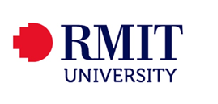
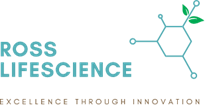

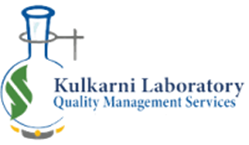
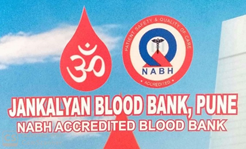


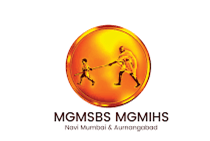

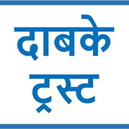

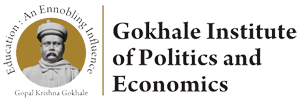
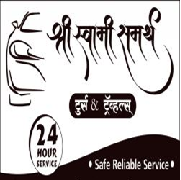
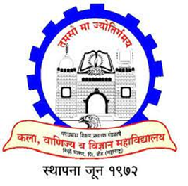
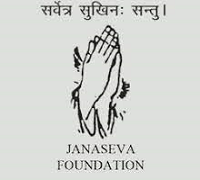

.png)


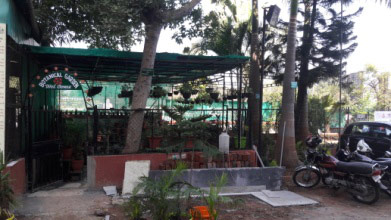

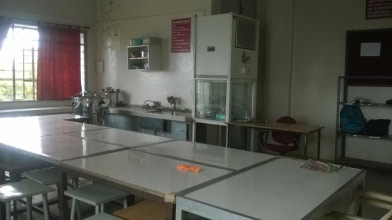
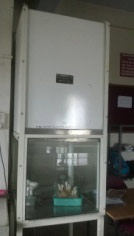
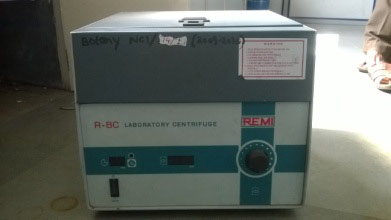
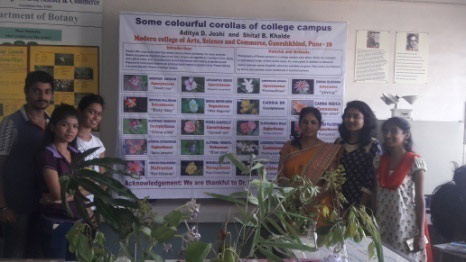
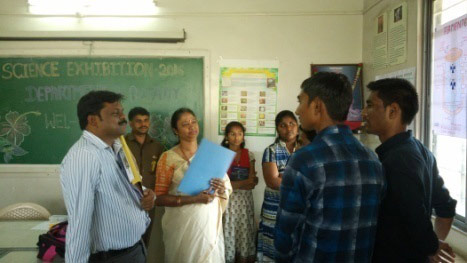
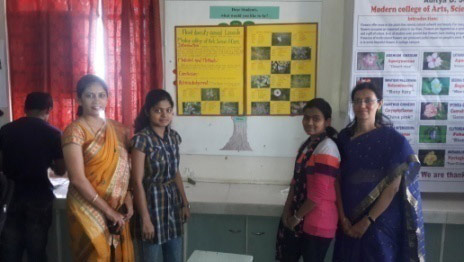
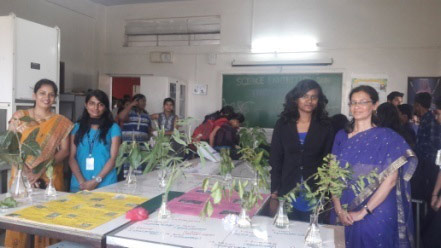
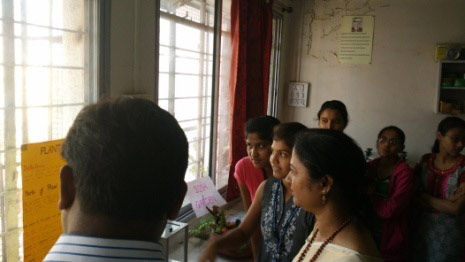
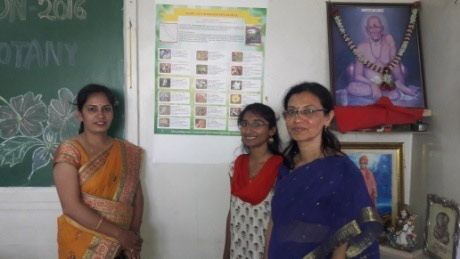
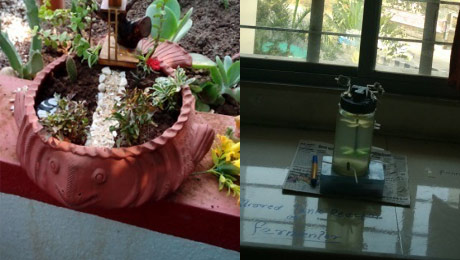
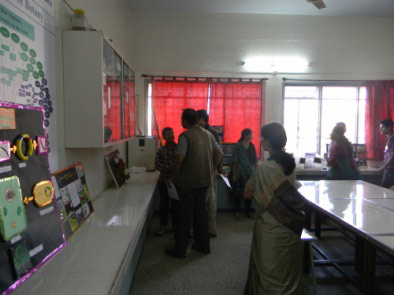
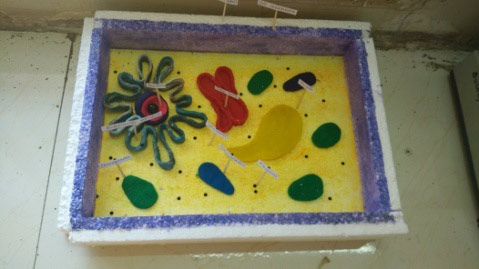 Plant Cell
Plant Cell